Surgeons juggle many screens. Manually switching inputs during procedures is slow and distracting. This can interrupt focus when every second is vital.
Yes, many modern medical displays can automatically recognize active signal sources and switch to them. This feature streamlines workflows, reduces delays, and minimizes potential errors in fast-paced clinical environments like operating rooms.
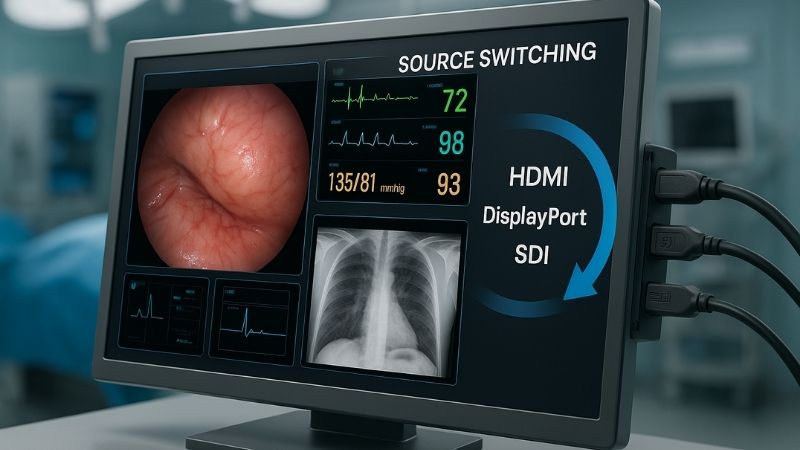
In today’s advanced operating rooms, the amount of visual information1 is incredible. Surgeons and their teams rely on images from endoscopes, laparoscopes, C-arms, patient monitoring systems, and more. I’ve seen firsthand how crucial it is for this information to be readily available. Martin, our President at Reshin, has always driven us to innovate in ways that simplify complex tasks for medical professionals. One such innovation is making displays smarter. The idea of a display that knows which signal to show without manual intervention is a big step forward. Let’s explore how this technology works and why it’s becoming so important.
What are the technical requirements for automatic signal recognition?
How does a screen "know" what to show? It’s not magic. Specific technologies enable this smart switching, needing careful design.
Technical requirements for automatic signal recognition include robust signal detection circuitry, support for standards like Hot Plug Detect (HPD) in HDMI/DisplayPort, and intelligent firmware to prioritize and validate active signals, often checking for signal stability.
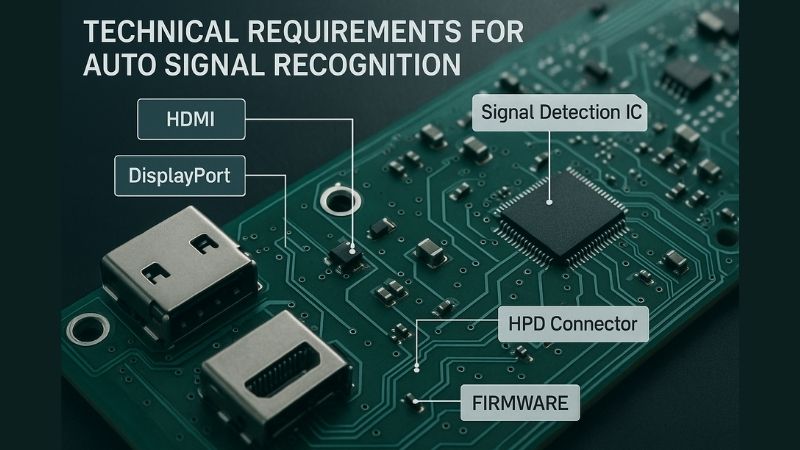
From my perspective, understanding what happens "under the hood" is fascinating. For a medical display to automatically recognize and switch signal sources, several technical elements must work together. It’s not just about having multiple input ports. The display needs sophisticated signal detection capabilities2. This often involves sensing voltage levels or data packets that indicate an active source. For digital interfaces like HDMI and DisplayPort, features like Hot Plug Detect (HPD)3 are essential. When a device is connected or powered on, it sends a signal to the display saying, "I’m here and ready!" The display’s internal electronics and firmware then process this information. My insight is that automatic signal recognition4 is becoming essential in hybrid operating rooms where multiple imaging systems are often used simultaneously. The display needs to be smart enough to differentiate between a temporarily lost signal and a new, active source. It might also incorporate logic to prioritize certain inputs or to revert to a default source if the active one disappears. At Reshin, ensuring this process is quick and reliable is a key engineering focus.
How does seamless switching impact surgical workflow efficiency?
Time is precious in surgery. Fumbling with display controls is a distraction. Smooth, automatic switching can make a real difference to the team.
Seamless automatic switching significantly impacts surgical workflow efficiency by minimizing delays associated with manual input selection. This allows the surgical team to maintain focus on the patient and procedure, leading to smoother, faster operations.
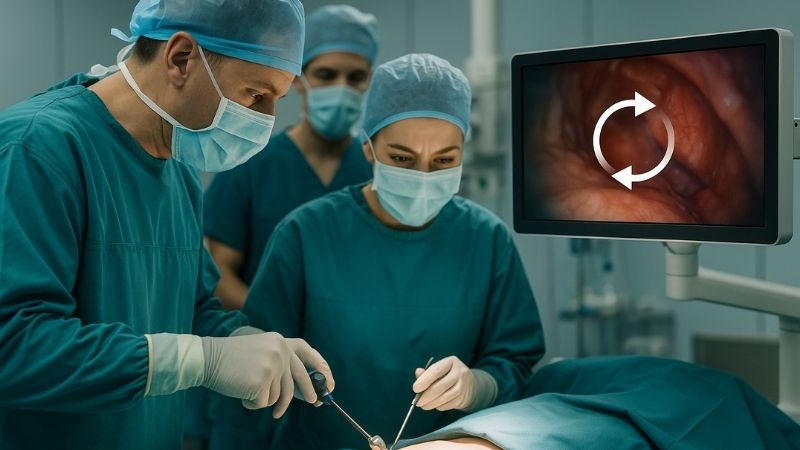
I’ve often heard from clinical partners how disruptive even small delays can be in the operating room. When a surgeon needs to see an image from a different source, like switching from an endoscopic view to an ultrasound image, any pause to manually change the display input can break the flow. This is where seamless automatic switching4 shows its real value. My insight is that by minimizing manual source switching, smart displays5 can reduce delay and prevent workflow interruptions during time-sensitive procedures. Think about a complex laparoscopic surgery where the surgeon needs to quickly reference an X-ray or a vital signs monitor. If the display automatically switches to the active source, or does so with a single, simple command, it keeps the procedure moving smoothly. Products like our Reshin MS321PC surgical monitor are designed with this in mind. They integrate automatic source detection6 with multiple input ports, supporting quick transitions without compromising image integrity. This means less time spent by staff managing equipment and more time focused on the patient. This efficiency gain contributes to a less stressful environment and can even help reduce overall procedure time.
Can auto-switching reduce human error in critical procedures?
Under pressure, mistakes can happen. Choosing the wrong display input is a simple error. But it can have serious consequences during surgery.
Yes, auto-switching can reduce human error by eliminating the need for manual source selection during critical procedures. This minimizes the risk of displaying incorrect information or delays caused by fumbling with controls under pressure.
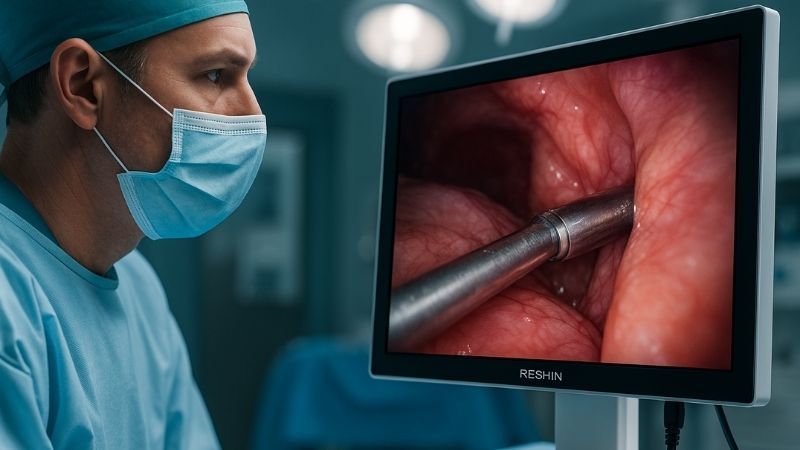
In any high-stakes environment, like an operating room or an interventional suite, reducing the potential for human error is a top priority. It might seem like a small thing – selecting the correct input on a display – but when a team is under pressure and focused on a complex task, even simple manual steps can go wrong. I’ve learned that relying on manual selection can sometimes lead to the wrong image being displayed, or a delay while the correct source is found. My insight is that reliable signal switching7—like that found in Reshin’s high-end surgical models—can help prevent miscommunication and reduce cognitive load8 on the surgical team. If the display intelligently and automatically shows the active, relevant signal, it removes one variable, one potential point of failure. This is particularly important when multiple imaging modalities are in use. For instance, a surgeon might expect to see the live feed from an endoscope but accidentally gets a static image or a feed from a different, non-critical device if the input was manually selected incorrectly. Auto-switching helps ensure the right information is on screen at the right time, supporting safer and more effective procedures.
How do different input interfaces affect signal detection?
Displays have many ports: HDMI, DisplayPort, SDI. Do they all detect signals the same way? The type of connection matters for reliable auto-switching.
Different input interfaces (e.g., HDMI, DisplayPort, SDI, DVI) use distinct mechanisms for signal detection. HDMI and DisplayPort utilize Hot Plug Detect (HPD), while SDI relies on sensing a valid data stream, impacting the speed and reliability of auto-detection.
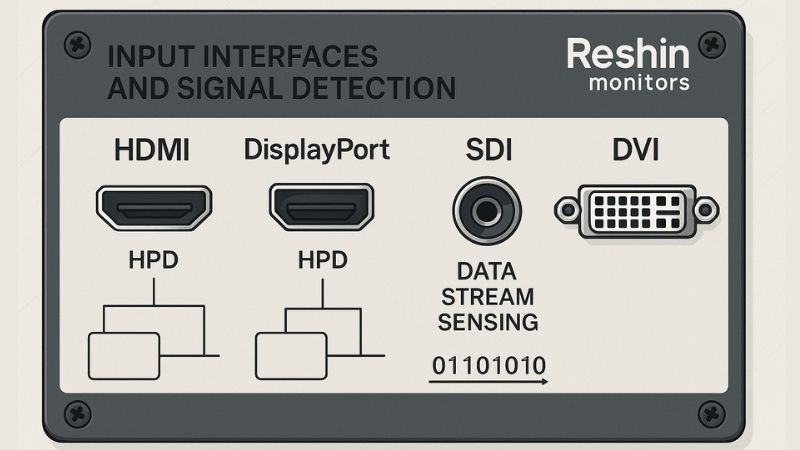
The type of connection used to send video to a display significantly influences how automatic signal detection works. It’s not a one-size-fits-all situation. For example, consumer-oriented interfaces like HDMI and DisplayPort have a dedicated "Hot Plug Detect9" (HPD) pin. When a source device (like a camera or computer) is connected and powered on, it signals its presence to the display via this HPD line. The display then knows something is there and can initiate communication to get image parameters (EDID exchange10). Professional interfaces like SDI (Serial Digital Interface11), common in broadcast and some high-end medical imaging, work a bit differently. They often rely on the display constantly monitoring the input for a valid, synchronized data stream. My insight here is that the robustness of these detection methods can vary. HPD is generally quite reliable for its intended purpose. SDI detection needs to be very precise to lock onto the signal correctly. Older analog interfaces like VGA had their own methods, often looking for sync pulses. The design of the display’s input board and its firmware must be sophisticated enough to handle these different detection schemes effectively and switch between them without glitches or long delays. This is crucial for the versatility needed in modern medical environments.
Here’s a quick comparison:
| Interface Type | Primary Detection Mechanism | Typical Use Cases in Medical | Auto-Switching Considerations |
|---|---|---|---|
| HDMI | Hot Plug Detect (HPD), EDID exchange | Endoscopy, ultrasound, general computing | Generally reliable, good for consumer/prosumer devices |
| DisplayPort | Hot Plug Detect (HPD), EDID exchange | High-resolution imaging, PCs | Similar to HDMI, supports higher bandwidths |
| SDI | Valid data stream, sync detection | Surgical cameras, broadcast-quality video | Robust for long cable runs, requires precise signal locking |
| DVI | HPD (digital), TMDS signal presence | Older imaging systems, PCs | Can be digital or analog, detection varies |
What role does firmware and compatibility play in smart source switching?
Hardware is one part. The "brain" of the display is its firmware. This software needs to be smart and work well with many devices.
Firmware is crucial; it contains the logic for detecting, prioritizing, and switching between signals. Compatibility ensures the display correctly interprets signals from diverse medical devices, adhering to various video standards and protocols for reliable smart switching.
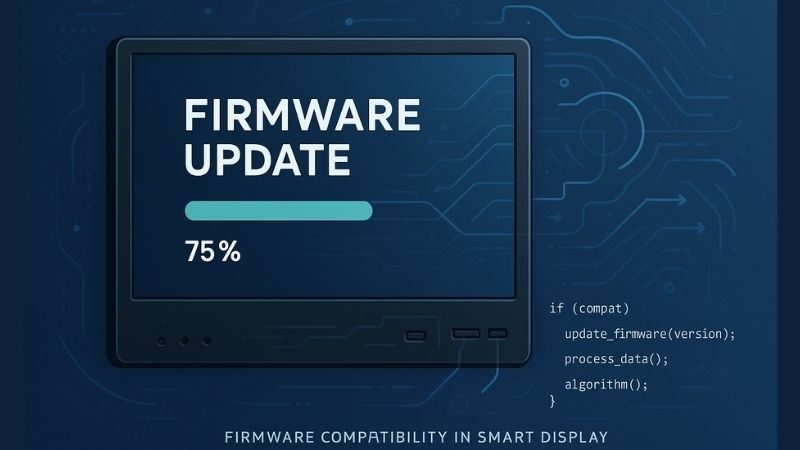
While the physical ports and detection circuits are the hardware foundation, the real intelligence behind automatic source switching lies in the display’s firmware. This is the embedded software that controls the display’s operations. I always think of firmware as the brain directing the brawn. The firmware contains the algorithms that interpret the signals from the detection circuits. It decides if a signal is valid and stable, prioritizes inputs if multiple signals appear simultaneously (e.g., always prefer HDMI 1 if active), and manages the actual switching process to minimize black screens or image artifacts. My insight is that while auto-switching12 improves convenience, the underlying firmware must be stable and highly customizable to adapt to diverse clinical setups and signal protocols. Medical devices can output a wide range of resolutions, refresh rates, and color spaces. The display’s firmware13 needs to be compatible with these variations to ensure a clear and accurate image is presented every time. At Reshin, significant effort goes into developing and testing our firmware to ensure it handles these complexities gracefully. Regular firmware updates can also introduce improvements, support new signal types, or enhance the logic of the auto-switching feature, keeping the display effective over its lifespan.
Conclusion
Automatic signal recognition and switching in medical displays streamline OR workflows, reduce errors, and enhance focus, making critical procedures safer and more efficient for everyone.
Learn how Reshin’s smart displays simplify surgical operations—contact us at martin@reshinmonitors.com.
-
Learn about the critical role of visual information in surgery and how it aids surgeons in making informed decisions. ↩
-
Learn about advanced signal detection capabilities that ensure reliable performance in displays, especially in critical medical environments. ↩
-
Explore this link to understand how HPD enhances connectivity and signal recognition in modern displays, crucial for seamless operation. ↩
-
Explore how seamless automatic switching enhances surgical efficiency and minimizes delays in the operating room. ↩ ↩
-
Learn about the benefits of smart displays in surgery, including reduced delays and improved patient care. ↩
-
Discover the technology behind automatic source detection and its impact on surgical procedures. ↩
-
Understanding reliable signal switching can enhance surgical safety and efficiency, making it crucial for medical professionals. ↩
-
Exploring cognitive load can provide insights into improving surgical outcomes and team performance under pressure. ↩
-
Understanding Hot Plug Detect is essential for grasping how modern displays communicate with devices, ensuring optimal performance. ↩
-
Learning about EDID exchange is crucial for understanding how displays and source devices communicate, impacting image quality and compatibility. ↩
-
Exploring SDI will provide insights into its role in professional broadcasting and medical imaging, highlighting its precision and reliability. ↩
-
Exploring auto-switching can reveal how it enhances user experience by managing multiple input signals effectively. ↩
-
Understanding firmware is crucial as it directly impacts the performance and adaptability of display devices in various settings. ↩

